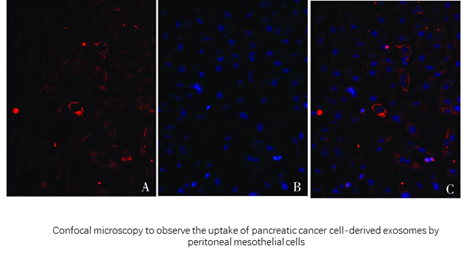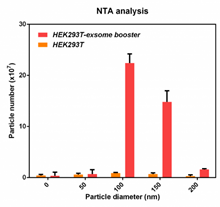Part:BBa_K2796000
SDC4 syndecan 4 [ Homo sapiens ]
Syndecan-4, a ubiquitous cell surface proteoglycan, mediates numerous cellular processes through signaling pathways that affect cellular proliferation, migration, mechanotransduction and endocytosis. These effects are achieved through syndecan-4 functioning as both a co-receptor for the fibroblast growth factor receptors (FGFR1-FGFR4) and its ability to independently activate signaling pathways upon ligand binding. As an FGFR co-receptor, syndecan-4 strengthens the duration and intensity of downstream signaling upon ligand binding; this is particularly evident with regard to mitogen-activated protein kinase (MAPK) signaling.We use it to support budding of endosomal membranes to form multivesicular bodies,thus affilitating its ability of delivering cargos such as RNA, DNA and proteins.
- Exosome refers to small vesicles (30-150 nm) containing complex RNA and proteins, and a variety of cells secrete exosomes under normal and pathological conditions. Exosomes are tiny vesicles secreted by cells, with a diameter of about 30-200 nm and a density of 1.13-1.21g/ml. They have a cup-like morphology and a bilayer membrane structure. They are naturally present in blood, urine, and saliva. In biological fluids such as breast milk and cell culture media. Almost all types of cells (immune cells, nerve cells, stem cells), including tumor cells, can produce and release exosomes.
- Exosomes contain protein-related proteins such as rRNA and microRNA. Exosomes can directly activate receptor cells through cell membrane receptors, and transport proteins, mRNA, miRNA, lncRNA, circRNA, and even organelles into recipient cells. Communication. Exosomes play a key role in physiological processes such as immune response, inflammatory response, angiogenesis, apoptosis, coagulation, and waste disposal. Different cell-derived exosomes contain different RNA and protein components and can be used as multiple diseases. The early diagnostic marker can also be used as a carrier for targeted drugs for disease treatment.
Experimental Results
Improved Results
- Group: LZU-CHINA 2019
- Author: Jian Qi; Haodong Yan
- Summary: We use exosomes to transport our target substances into tumor cells. We use this part to do the experiment.
- Exosomes (Fig. A), sw1990 (Fig. B), under confocal microscopy, it can be seen that the PKH26-labeled exosome showing red fluorescence is mainly located in the cytoplasm of sw1990, distributed in the perinuclear region, and most of the cells are visible. To the red fluorescent signal (Fig.C)
- NTA analysis refers to nanoparticle tracking analysis. The experimental results showed that the number of particles of HEK293T cells overexpressing exosome booster at 100 nm and 250 nm was significantly higher than that of control cells (about 23 times that of control cells). This suggests that exosome potentiators can increase the number of exosomes secreted by 293T cells.
Usage and Biology
Sequence and Features
- 10COMPATIBLE WITH RFC[10]
- 12COMPATIBLE WITH RFC[12]
- 21INCOMPATIBLE WITH RFC[21]Illegal BglII site found at 192
- 23COMPATIBLE WITH RFC[23]
- 25COMPATIBLE WITH RFC[25]
- 1000COMPATIBLE WITH RFC[1000]
| None |


